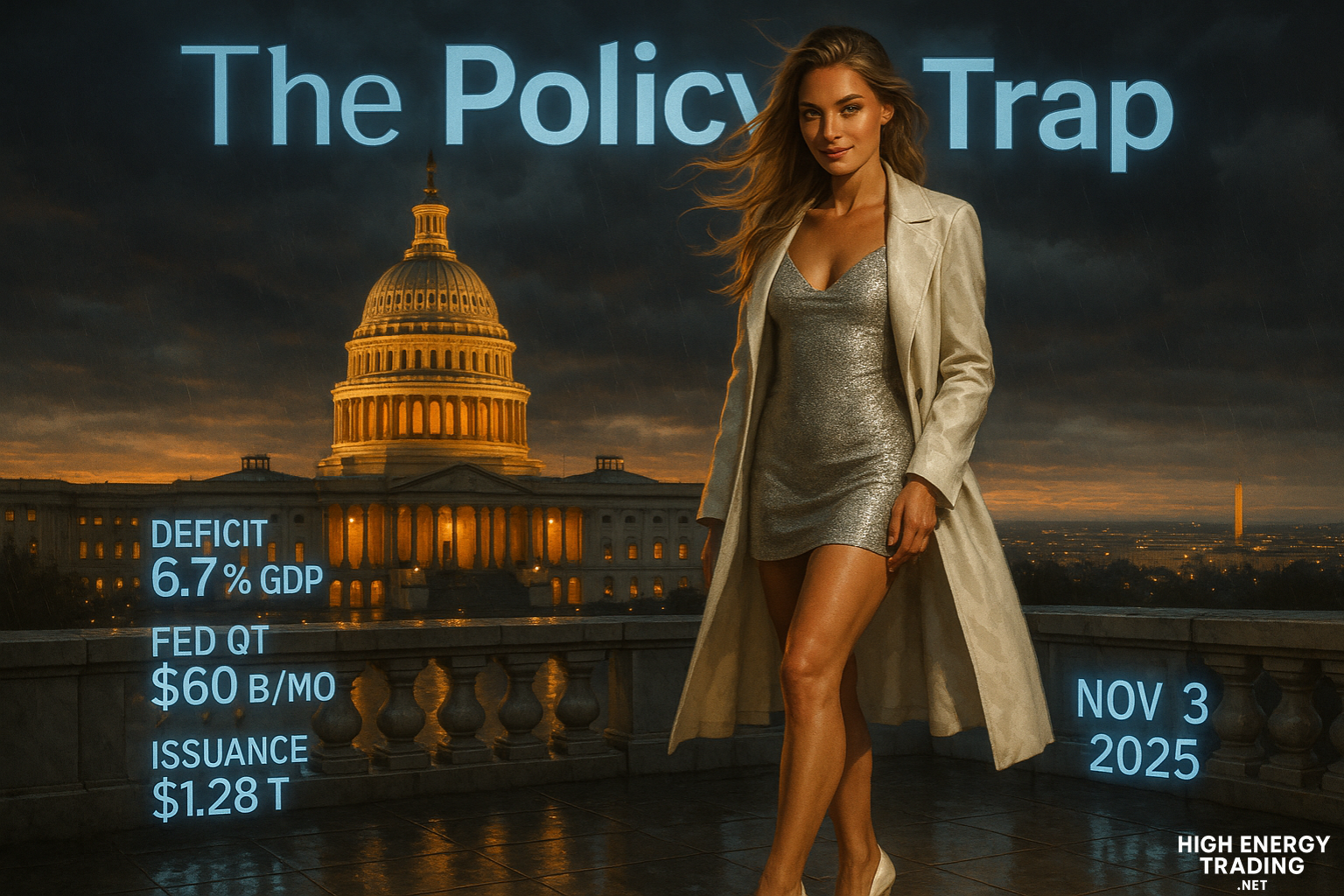The Illusion of Calm — What the Market Shutdown Really Hides
Markets are soaring to fresh highs even as Washington grinds to a halt. The S&P 500 and Nasdaq recently posted new record closes, while the federal government partial shutdown forces most financial regulators off the clock.¹ That dissonance is not coincidence — it is the underbelly of a market that no longer trusts its foundations.
The disarray begins at the source
With the SEC furloughing over 90 percent of its staff and the CFTC operating at just 5.7 percent of capacity, critical functions like IPO review, enforcement, and ETF approvals have all but stalled.² The timing could not be worse. We are mid-Q4, preparing for a flurry of corporate filings and capital markets activity. A regulatory blackout at this juncture introduces a structural risk that few are pricing in.
The labor numbers intensified the déjà vu. In September, private payrolls dropped by 32,000 jobs — a sharp miss against expectations for growth.³ With principal nonfarm employment data likely delayed by the shutdown, that ADP miss looms over subsequent data releases. In a vacuum of clarity, markets may overreact to weak inputs. The end result: a fragile veneer of confidence built on invisible scaffolding.
Liquidity is still buoyant — but for how long?
Liquidity is propping up equity prices. The excess reserves in the financial system remain elevated. Analysts point out that U.S. money creation has outpaced economic growth over recent quarters, acting as an underrecognized driver of risk asset liquidity.⁴ Against this backdrop even broken policy and fractured data flows fail to disturb markets entirely.
But liquidity is not a perpetual defense. When a shock arrives, it will find markets more brittle than they appear. A policy misstep, a surprise data surprise, or a political escalation could set off repricing waves in equities, credit, and volatility markets.
Quarters of strength mask underlying rot
At the same time, the headlines are generous: Goldman Sachs is calling for a year-end rally, projecting two more rate cuts in 2025 and two in 2026.⁵ The Fed, for its part, is being forced to navigate between a soft labor signal and sticky inflation — and with a regulatory apparatus on pause, that tightrope gets thinner.
Corporate earnings season now looms as the next battleground. Without full transparency from regulators and amid a backdrop of opaque labor data, the risk of earnings disappointments or accounting restatements grows. It is the kind of “small surprise shock” that can peel off confidence quickly.
What to watch in the coming weeks
Watch approvals and capital markets operations: delays in IPOs, SPACs, or high-yield issuance may rattle sectors disproportionately exposed to funding stress.
Track policy communication: if the Fed leans dovish in response to the weak labor print or shutdown noise, markets may overshoot.
Monitor volatility spreads: with catalyst flow diminished, divergences between realized and implied volatility could widen — a warning sign that complacency is peaking.
Focus on second-level names. Large caps may carry indices, but mid-caps and high multiple growth names are under more strain. In a regime shift, they will be the first to crack.
This is not a standard late-cycle pullback. It is a governance shock dressed as a headline glitch. The illusion of calm is the simplest test of real fragility. And right now, we are testing too many illusions at once.
Markets just might regret assuming regulators are irrelevant.




